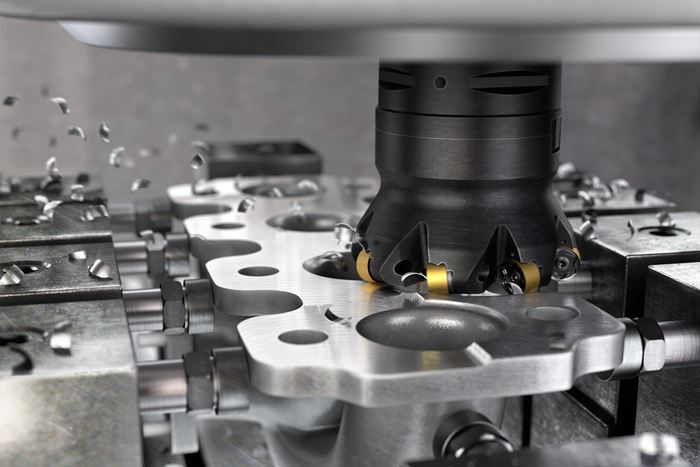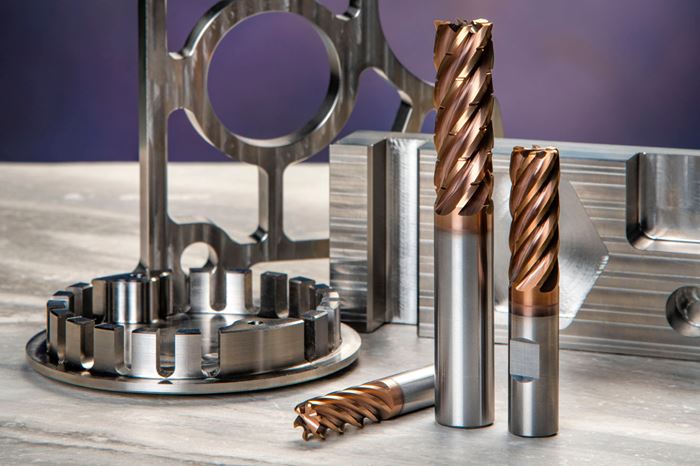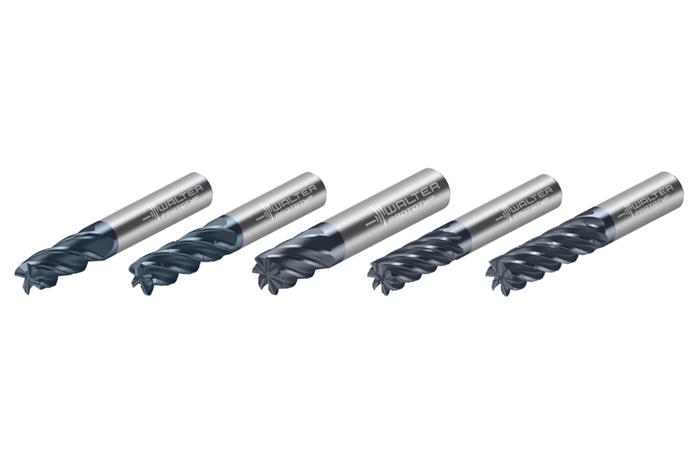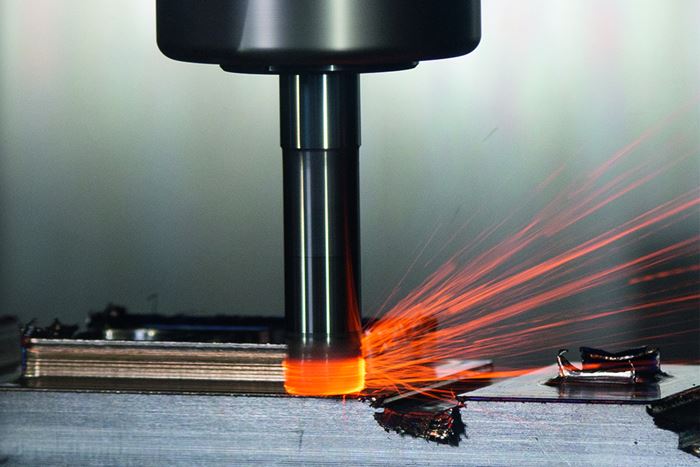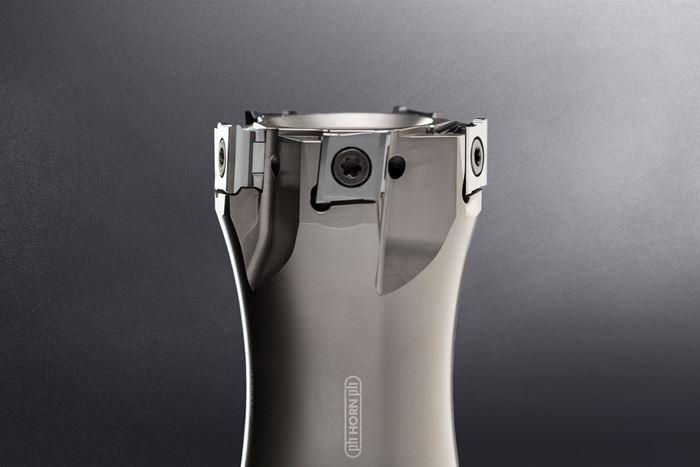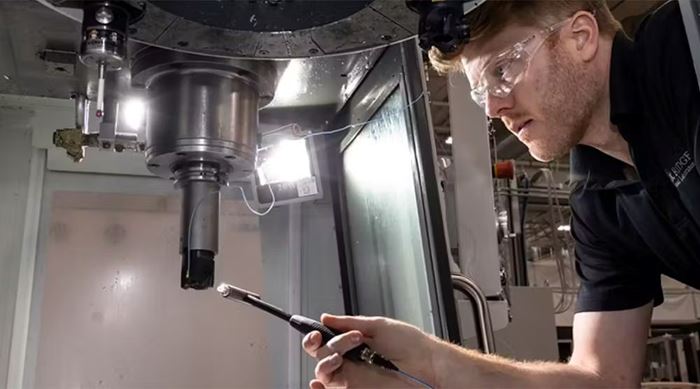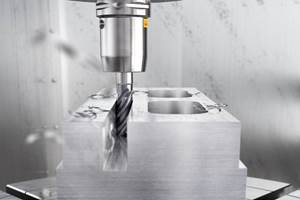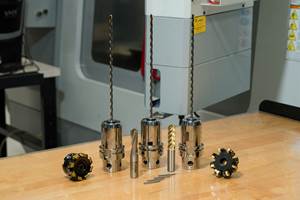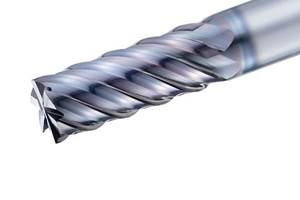Milling is a complex metal removal process that usually involves a clamped workpiece being fed in a linear direction into a multiple tooth rotating cutter. Due to the vast variety of machinery, controls and tools that are available, milling is one of the universal machining methods of choice. It offers excellent machining efficiency, good surface finishes, great flexibility and a high degree of accuracy. While turning is frequently used to create round surfaces with a single cutting edge, milling normally uses several cutting edges in a single tool to create flat faces, shoulders, slots and contoured surfaces. There are many types of machine tools used to perform a milling operation, including manually controlled, numerically controlled and special dedicated machines.
10 Tips for Titanium
Simple process considerations can increase your productivity in milling titanium alloys.
Milling Tools: Essential Reading
A New Milling 101: Milling Forces and Formulas
The forces involved in the milling process can be quantified, thus allowing mathematical tools to predict and control these forces. Formulas for calculating these forces accurately make it possible to optimize the quality of milling operations.
How to Tackle Tough Angled Pocket Milling With Two Tools
Milling a deep pocket with a tight corner radius comes with unique challenges, but using both a flat bottom drill and a necked-down finishing tool can help.
Choosing Your Carbide Grade: A Guide
Without an international standard for designating carbide grades or application ranges, users must rely on relative judgments and background knowledge for success.
How to Manage Cutting Tool Inventory in a Small Job Shop — The One-Person Shop #4
Working in short lead times means maintaining a large range of tools to be ready. What is the right way to stock and organize this investment?
Why Binderless CBN Inserts Turn Titanium Faster
A new formulation of cubic boron nitride could provide a more solid alternative to cemented carbide as finish-machining becomes more demanding.

FAQ: Milling Tools
What is milling?
At its most basic, milling is the meeting of a rotating tool with a clamped and stationary workpiece, as opposed to turning where the tool is stationary and the work material rotates. Actually, the workpiece has feed motion imparted from the machine tool. The meeting of the rotary motion of the cutter and the cutting edge of the tools produces fluctuating cutting forces: vibration, heat, and, if all goes well, chips.
Source: A New Milling 101: What Milling Is, Then and Now (Plus a Glossary of Milling Terms)
What is a milling machine?
Milling machines may have either vertical or horizontal spindle orientation, and typically, face milling cuts flat surfaces, but multi-axis CNC machines make it possible to include three-dimensional movements. That said, there are four basic categories of milling: face milling, periphery milling, slot milling, and specialty applications.
Source: A New Milling 101: What Milling Is, Then and Now (Plus a Glossary of Milling Terms)
What are the basic categories of milling?
Face milling: Used for creating a flat surface (face) on the workpiece. The cutting plane is usually perpendicular to the axis of rotation and the cutters most often feature a single row of inserts, designed with a wide range of cutting geometries, inserts, lead angles, and mounting adaptations.
Periphery milling: Generates a primary surface parallel to the spindle rotation. A secondary surface is sometimes produced. The cutting plane is usually parallel to the axis of rotation.
Slot milling: Used for producing a slot or channel in the workpiece. There are two primary types of slot milling cutters: disk mills and end mills. Disk mills can be high-speed steel, brazed carbide, and indexable-insert-based. They are typically used in operations perpendicular to the spindle rotation.
Specialty applications: Includes copy milling, plunge milling, ramping, helical and circular interpolation, trochoidal, and others.
Source: A New Milling 101: What Milling Is, Then and Now (Plus a Glossary of Milling Terms)

Milling Tools Suppliers
CNC Machining Gets a Composite Infusion
High-volume milling illuminates the potential of merging metal with lighter, vibration-resistant materials.
Sandvik Coromant End Mills Feature Specialized Coating
The new CoroMill Plura HD solid end mills, featuring a Zertivo 2.0 coating, are said to improve tool life, process security and productivity over previous versions.
Kennametal's Expanded Tooling Portfolio Improves Performance
The company has launch eight new products that expand on and support existing platforms across multiple applications.
OSG End Mills Provide High-Efficiency Milling
The company has expanded its range of end mills with two offerings for high-speed milling.
Walter Xtra-tec XT Milling Tools Feature Pocket Design
Eastec 2023: Walter’s Xtended Technology (XT) milling tools offer large cross-sections for maximum tool stability and a larger contact surface for a secure seat and reduced surface pressure.
Ceratizit's Updated Tooling Solutions Improve Machining Performance
The company has upgraded its EcoCut indexable inserts lineup, as well as introduced two new toolholding and workholding solutions.
Big Daishowa Chuck Eliminates Chatter in Milling Operations
The Mega 12DS chuck is designed for trochoidal milling with anti-vibration end mills.




